I am making a driver PCB to drive an XHP70.2 LED at 15A (~7v) Continuous, Controlled from an Arduino. I am new to OpAmp's so I would like to know:
- Does this circuit look as though it would function as intended (as a current source for 15A@7v from a 2S Li-ion, controlled by an Arduino PWM pin)?
- Would 1.5mOhm (1W 2512 [6432 Metric] Thick Film) be a suitable value for RSENSE?
- What OpAmp would be best?
- What values would be needed for R1, R2,...R8? (& C1)
- Would (CSD16340Q3)'s be suitable for U1 & U2?
CSD16340Q3 - http://www.ti.com/lit/ds/symlink/csd16340q3.pdf
NCP3420 - https://www.onsemi.com/pub/Collateral/NCP3420-D.PDF
If it will work, are there any possible improvements? i.e. reducing the number of components
Thank you in advance
